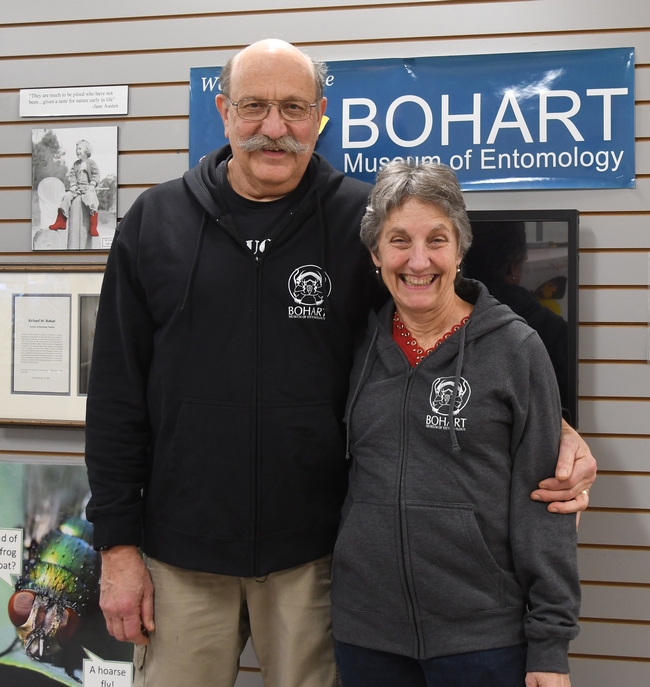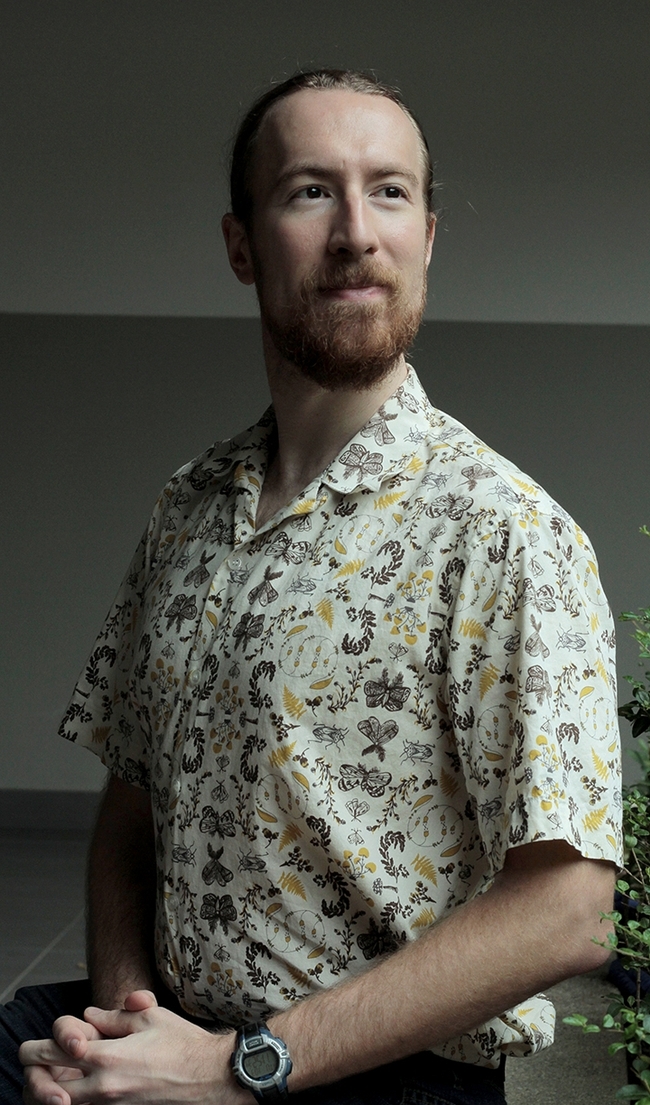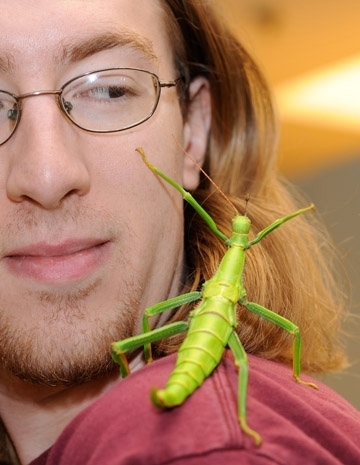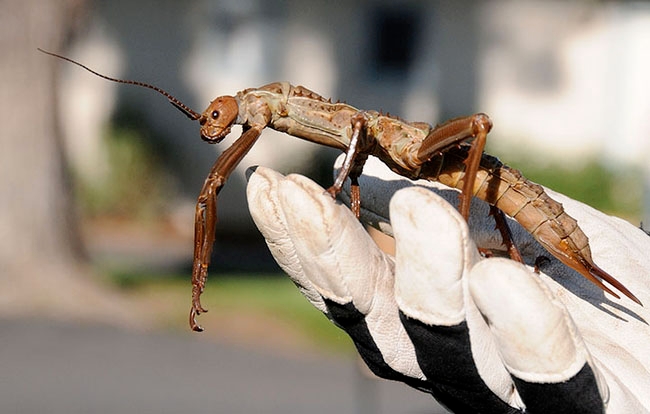
No?
Well, a newly described bacteria species now carries the last name of a husband-wife team: Lynn and Robert "Bob" Kimsey of the UC Davis Department of Entomology and Nematology.
Bob, a forensic entomologist, and Lynn, a hymenopterist and director of the Bohart Museum of Entomology, recently welcomed a joint namesake: Chryseobacterium kimseyorum.
It's a species found more than a decade ago inside the gut of a stick insect housed in the Bohart Museum of Entomology petting zoo.
“We've had a few things named after us but never bacteria--that's a first,” Lynn related.
Our story begins more than a decade ago when then UC Davis doctoral student Matan Shelomi, now an associate professor of entomology at National Taiwan University, Taiwan, was studying the digestive physiology of the stick and leaf insects, Phasmatodea, for his Ph.D, pursued under the guidance of his major professor, Lynn Kimsey. He isolated and cultured bacteria from the guts and cages of the stick insects. Some of the species seemed new to science, but Shelomi had neither the time nor the resources to prove it then.
He stored the microbes inside the deep freezers of the Phaff Yeast Culture Collection, UC Davis Department of Food Science and Technology.

"Thankfully, I kept all my notes from graduate school," said Shelomi, "so I was able to check and see which strains I had flagged as possibly new species. When I saw one of them was the same genus as the new microbe found in Taiwan, I realized this was an opportunity to describe them both together." So Shelomi emailed Kyria Boundy-Mills, curator of the Phaff Collection, “who had my old specimen revived and shipped across the Pacific.”
Analysis confirmed two new species. The result: A research article published April 19 in the International Journal of Systemic and Evolutionary Microbiology. The title:“Chryseobacterium oryctis sp. nov., Isolated from the Gut of the Beetle Oryctes rhinoceros, and Chryseobacterium kimseyorum sp. nov., Isolated from a Stick Insect Rearing Cage.”
Han named his species after the beetle he found it in. Shelomi named his species (which he found in Eurycantha calcarata, commonly known as the "Giant New Guinea Stick Insect” or “Thorny Devil Stick”) after his former bosses. The suffix -orum in kimseyorum indicates that the name honors both Kimseys. “Officially one cannot name a microbe after more than one person, but there is precedent, so the (journal) editors allowed it. My grad student wanted to name her microbe after her dog, BaBa, but the editors did not allow that. Spoil-sports!”

Tabatha Yang, education and outreach coordinator of the Bohart Museum, relayed the news to a tour group visiting the insect museum on April 20. “I just used this story today with a tour group,” she told Shelomi. “I mentioned how your student was denied her dog's name. I love how this ties the Bohart and the Phaff Yeast collection together and then California and Taiwan.”
As for the stick insect, “It's pretty aggressive for a walking stick,” Lynn Kimsey said, noting that Andy Engilis, curator of the UC Davis Museum of Wildlife and Fish Biology, told her about his work in Papua New Guinea. “These walking sticks would actually chase rodents out of their burrows and take over the burrows to rest in,” she related. “That's pretty tough for a walking stick.”
Meanwhile, the Kimseys are enjoying their new namesake. LynnKimsey already has seven other species named for her:
- Mystacagenia kimseyae Cambra & Wasbauer 2020 (spider wasp)
- Oligoaster kimseyae Soliman 2013 (tiphiid wasp)
- Exaerate kimseyae Oliviera 2011 (orchid bee)
- Spilomena kimseyae Antropov 1993 (solitary wasp)
- Manaos kimseyae Smith (argid sawfly)
- Spintharina kimseyae Bohart 1987 (cuckoo wasp)
- Neodryinus kimseyae Olmi 1987 (dryinid wasp)
Bob Kimsey has as at least two species named for him: Acordulacera kimseyi Smith, 2010 (sawfly) and Grandiella kimseyi Summers & Schuster (mite).
Shelomi, a Harvard University graduate who received his doctorate from UC Davis in 2014, served as a National Science Foundation postdoctoral fellow at the Max Planck Institute for Chemical Ecology, Germany for two years before accepting a faculty position in 2017 at National Taiwan University.
Shelomi returned to UC Davis in 2017 to present a seminar on "Revelations from Phasmatodea Digestive Track Transcriptomics,” to the department.
Attached Images:
